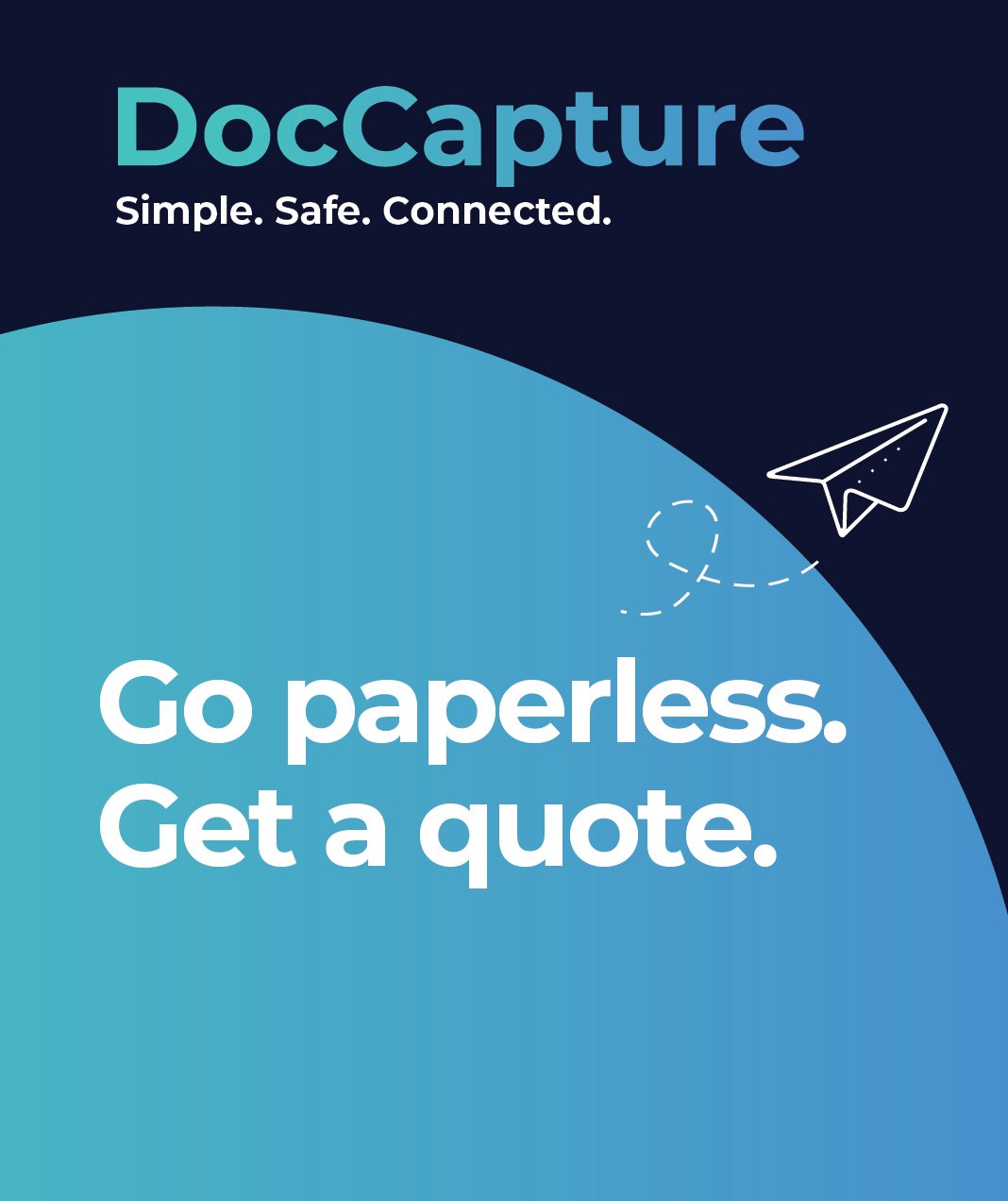Improving Public Record Access with Secure Document Scanning Solutions
Table of contents
For government agencies, improving public record access with document scanning has become more than a modernization goal—it’s a necessity. Citizens now expect quick, transparent access to public records, from property deeds to meeting minutes, without enduring long waits or physical visits. At the same time, agencies must balance these demands with strict security standards, budget limitations, and complex compliance requirements.
Traditional paper-based processes often create bottlenecks. Files stored in boxes or outdated systems can slow down staff, frustrate constituents, and expose agencies to risks such as document loss, misfiling, and non-compliance. These challenges make it difficult for public sector organizations to meet growing transparency expectations while keeping costs under control.
Document scanning and digital workflows offer a solution. By digitizing records, agencies can streamline retrieval, reduce costs, enhance security, and meet compliance standards—all while serving citizens more effectively. The result is a stronger, more transparent connection between government and the communities they serve.
The Challenges with Traditional Paper Records
Despite ongoing digital transformation initiatives, many government agencies still rely heavily on paper-based records. While familiar, these systems pose significant challenges for both staff and the citizens they serve.
1. Slow, Inefficient Workflows
Searching for a single record often means digging through file cabinets, storage facilities, or outdated microfilm archives. These manual processes slow down staff productivity and frustrate citizens who expect faster service. Agencies that rely on paper are at a disadvantage when compared to jurisdictions embracing solutions like government document scanning, which enable near-instant retrieval.
2. Increased Risk of Damage, Loss, or Security Breaches
Paper documents are vulnerable to fire, flooding, and everyday mishandling. Worse, they can be stolen, copied, or destroyed without a trace. Digital archives, by contrast, provide encrypted storage and controlled access to reduce risk—topics we explore further in our article on Document Scanning in Local Government.
3. Compliance and Transparency Challenges
Meeting state and federal transparency requirements becomes far more complex with paper records. Physical files are harder to track and audit, making it difficult to ensure compliance. Agencies looking to simplify these obligations can learn more in Modernizing Government: The Role of Document Scanning.
How Document Scanning Improves Access and Transparency
For public sector organizations, improving public record access with document scanning isn’t just about modernization—it’s about building trust with citizens while making internal processes more efficient. Digitization enables agencies to break free from the limitations of paper, offering benefits that impact staff productivity and public engagement alike.
1. Faster Search and Retrieval for Staff and Citizens
Digital archives allow staff to locate records in seconds, whether it’s a decades-old property deed or last week’s meeting transcript. Citizens benefit as well, gaining the ability to request records online rather than making in-person visits or waiting for mail delivery. Agencies that have transitioned to digital workflows, as highlighted in Document Scanning for State and County Government Records, report reduced turnaround times and fewer public complaints.
2. Digital Audit Trails to Support Compliance
Each access, modification, or transfer of a digital file can be logged automatically. This ensures agencies can provide clear records of document handling, which is critical for meeting public records laws and audits. These features simplify the compliance process that once required labor-intensive tracking of paper files.
3. Seamless Interdepartmental Sharing
Digitized records can be securely shared across departments without moving physical files, avoiding delays and errors. This streamlined collaboration improves responsiveness to citizen requests and helps agencies coordinate services more effectively. Local agencies can explore how this has impacted service delivery in Efficiency in Government: How Document Scanning Helps.
Addressing Security and Compliance Concerns
For government CIOs, Records Officers, and Compliance Managers, any modernization initiative must first address the question: Is it secure? While some agencies hesitate to digitize due to perceived risks, improving public record access with document scanning often reduces threats compared to paper-based systems.
1. Secure Scanning Processes and Encrypted Digital Storage
Reputable providers like DocCapture use secure, audited processes for scanning and indexing records. Digital files can be encrypted at rest and in transit, ensuring only authorized personnel have access. With physical records, access control is harder to enforce, and sensitive files are more susceptible to unauthorized handling.
2. Built for Governmental Standards and Privacy Protections
Digital archives can be configured to meet standards such as NARA guidelines, HIPAA (for health-related public records), and state-specific privacy mandates. Version control and retention scheduling ensure compliance is consistent and verifiable, helping agencies avoid fines and legal issues.
3. Reduced Risk vs. Paper Records
Paper records can be misplaced, stolen, or destroyed without a trace. Digital systems, backed by redundant backups and user tracking, drastically reduce these risks. Agencies evaluating the transition can see how other jurisdictions handled risk mitigation in Scanning Government Records.
Cost and Efficiency Benefits for Agencies
Beyond transparency and security, improving public record access with document scanning delivers measurable financial benefits. While some agencies worry about upfront costs, digital transformation often pays for itself quickly by reducing storage expenses and streamlining daily operations.
Reduced Physical Storage Costs
Government agencies spend thousands—sometimes millions—annually storing records in on-site and off-site facilities. Digitization eliminates the need for most physical storage, allowing agencies to repurpose space or end long-term warehouse contracts.
Streamlined Workflows and Staff Productivity
Staff no longer waste hours searching for files, copying documents, or coordinating physical transfers between departments. With indexed digital archives, requests that once took days can often be resolved in minutes, enabling staff to focus on higher-value work.
Overcoming Resistance and Implementing Change
Even when the benefits are clear, many government agencies face resistance to change—whether due to budget concerns, staff apprehension, or uncertainty about new technology. Partnering with the right provider can make the transition to improving public record access with document scanning far less daunting.
1. Training and Support for Staff
DocCapture doesn’t just deliver a solution—it provides the training and onboarding government employees need to feel confident. Staff receive hands-on instruction on how to access, manage, and share digitized records, minimizing disruption to their daily work.
2. Phased Implementation to Fit Budgets
Recognizing the fiscal constraints of public agencies, DocCapture often deploys projects in phases. Agencies can start with high-demand record types—like property deeds or meeting minutes—before expanding to full archival collections. This approach spreads costs while delivering early wins.
3. Real-World Examples of Success
State, county, and municipal agencies across the U.S. have streamlined their records management through scanning. For example, one county recorder’s office reduced citizen request turnaround times from five business days to less than 24 hours after adopting a phased digitization project (see Document Scanning for State and County Government Records for similar success stories).
Conclusion
For government agencies, balancing transparency, security, and efficiency no longer requires compromise. By improving public record access with document scanning, state, county, and municipal organizations can streamline workflows, reduce costs, enhance compliance, and better serve the citizens who rely on them.
DocCapture specializes in helping public agencies modernize their record management with secure, scalable scanning solutions. Whether your agency is starting with a single department or planning a full archival transformation, our phased approach ensures minimal disruption and maximum results.
Ready to start making your records more accessible and secure?
Explore our Government Document Scanning solutions and fill out our “Get a Quote” form to discuss how DocCapture can help your agency lead with transparency and efficiency.
Share this
You May Also Like
These Related Stories

Overcoming Resistance to Change in Government Digitization Efforts

Cost-Effective Governance: Cutting Costs with Document Scanning

